Contents
HELLO DEAR , IF YOU NEED TO DOWNLOAD THE MANUALS AND FORMULAS AND EBOOKS FOR 27 EXPERIENCED EX-HOLCIM ENGINEER PLEASE CLICK HERE NOW, THIS IS THE ULTIMATE ESSENTIAL PACKAGE CONTAIN BOOKS , PROCESS MANUALS AND EXCEL SHEETS FOR CALCULATIONS.
kiln Refractories Selection Criteria
Zoning in cement kiln
- Drying Zone / Chain Zone
- Preheating Zone / Calcining Zone
- Safety Zone
- Upper and Lower Transition Zone
- Sintering (Burning) Zone
- Cooling Zone
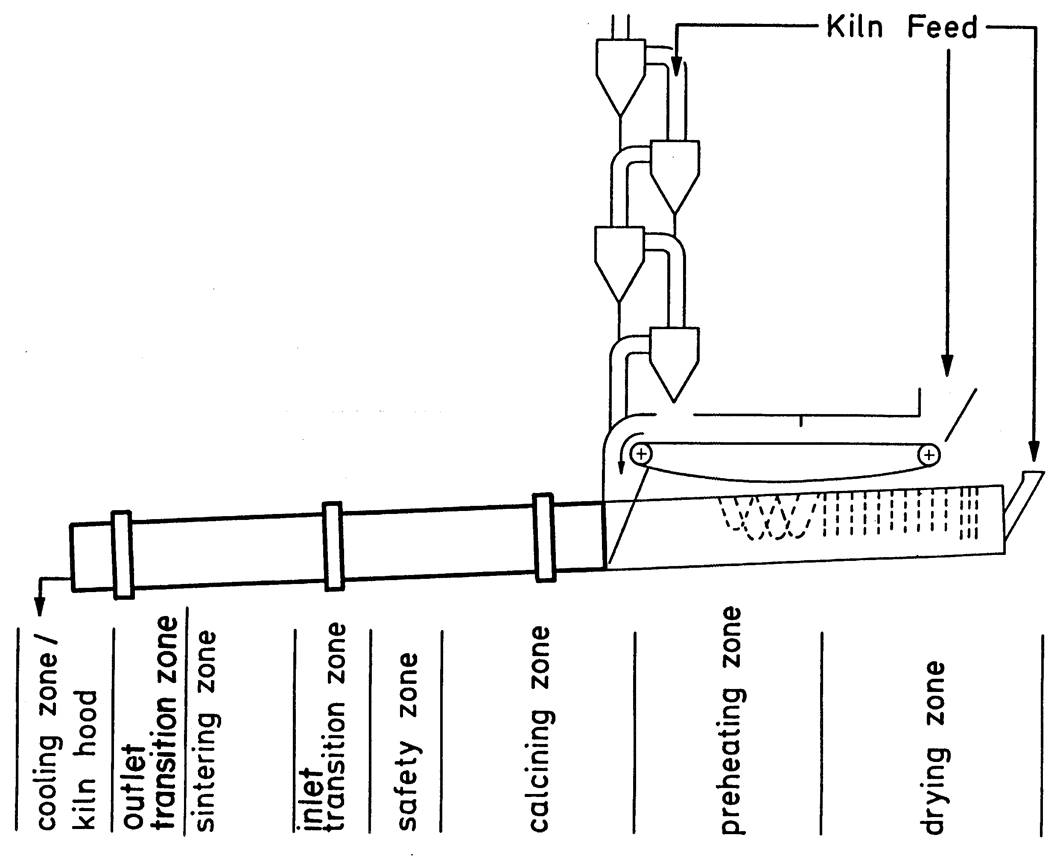
Drying Zone / Chain Zone
- High abrasion/wear caused by the movement of the chains
- Low material temperature
(100-400 °C) - Selection of Bricks:
Dense fire-clay
Air setting mortar (water resistant)
Dense, fire-clay castables (if chain hangers requires extensive modification work)
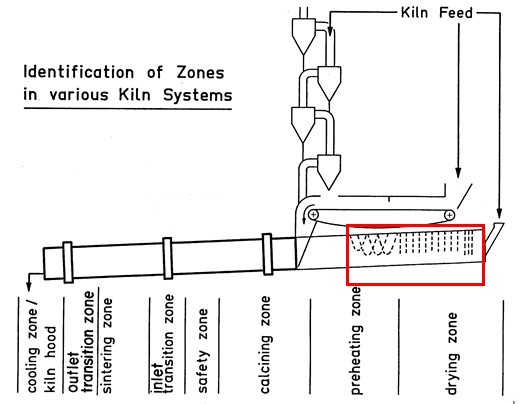
Preheating Zone / Calcining Zone
- Preheating Zone: Driven off hydrate-water and heating up of raw material:
up to 700°C. - Calcining Zone: Starts below 600°C and ends at approx. 1200°C. Most part takes place at 700-900°C
- Mechanical abrasion by material, temperature changes
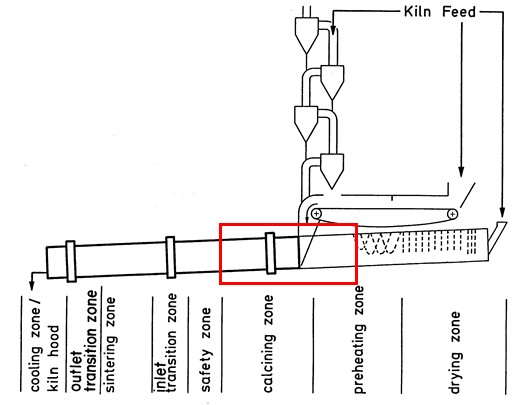
- Selection of Bricks:
Preheating Zone
Low alumina fire-clay
Lightweight fire-clay (better thermal insulation)
Calcining Zone
Normal fire-clay
Lightweight fire-clay
Acidic light weight bricks (SiO2 : > 65%) in case of alkali attack
Safety Zone
- High temperature variations
- Chemical attack (eutectic reactions)
- Alkali attack
- Selection of Bricks:
Low porosity (<16%)
High thermal shock resistance
Basic bricks
Alumina rich bricks:
Al2O3: 50 to 60%
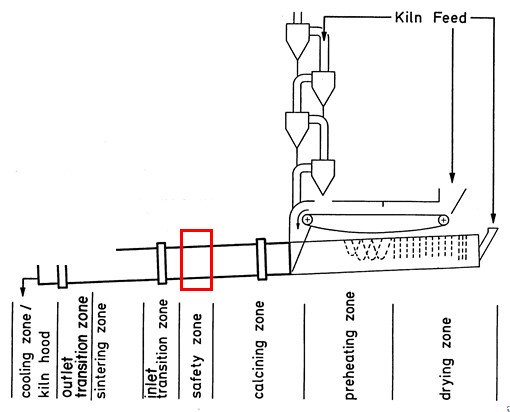
Transition Zones
- Highest thermal load
- No or only unstable coating
- Directly exposed to the flame radiation
- High temperature variations (flame and secondary air)
- Attack by alkali salts and clinker melts
- Selection of Bricks:
Magnesia-spinel bricks of very pure (synthetic) materials (chrome free)
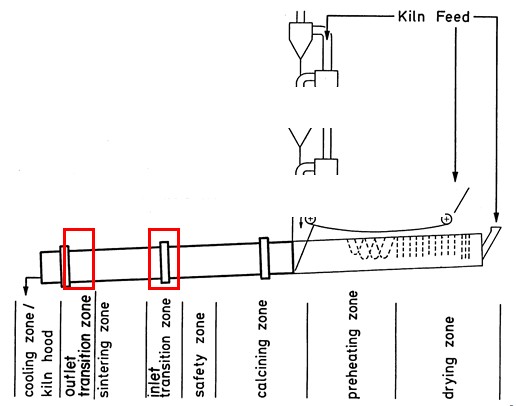
Sintering (Burning) Zone
- Material temperature: 1100 °C to 1400 °C (up to 1500 °C)
- More or less stable coating, formed with clinker and liquid phase.
- Attack by increased material diffusion with formation of the C3S
- Attack alkali salts
- High temperatures (overheating)
- High thermal shocks depending on coating stability
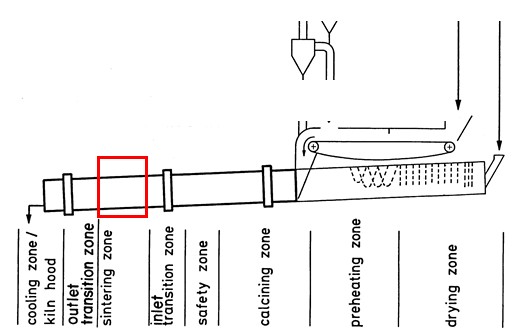
- Brick Selection
Dolomite
Chrome-free magnesia-spinel
Hands off magnesia-chrome bricks
Cooling Zone
- High thermal shocks (secondary air temperature, clinker/coating)
- Abrasion (clinker dust)
- Alkali attack
- Overheating
- Brick Selection
Dense, abrasion resistant high alumina bricks Al2O3 80 %
(with SiC)
Basic bricks (Mg-spinel) in case of heavy chemical attack.
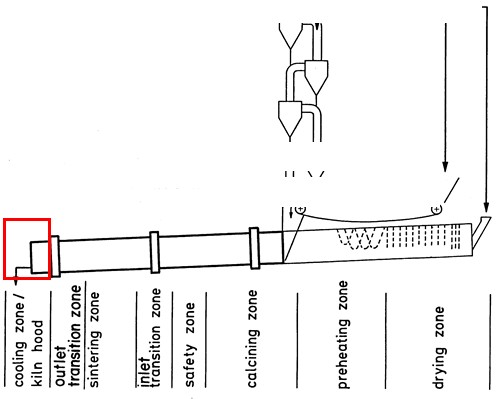
if you have any Questions , please don’t Hesitate to consult our Refractories consult Department at project20062015@gmail.com
Hi,I check your blog named “Refractories Selection Criteria – Cement Equipment” like every week.Your writing style is witty, keep it up! And you can look our website about
I must say you have hi quality articles here.
Why particular zone got the name as “Safety zone”? Is it depend on temperature at this location?